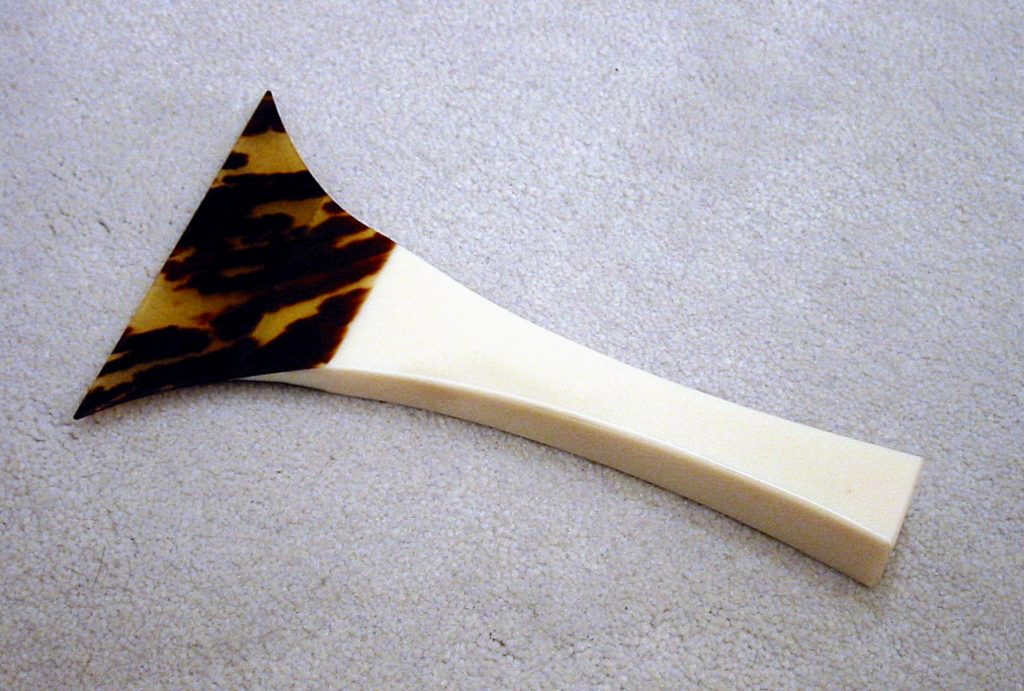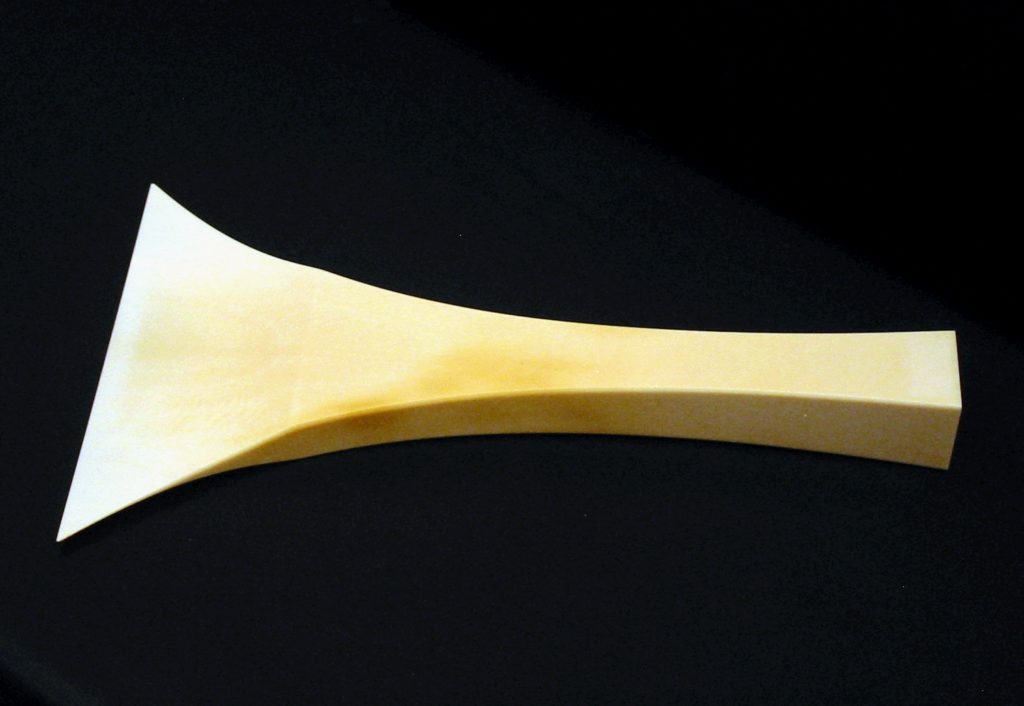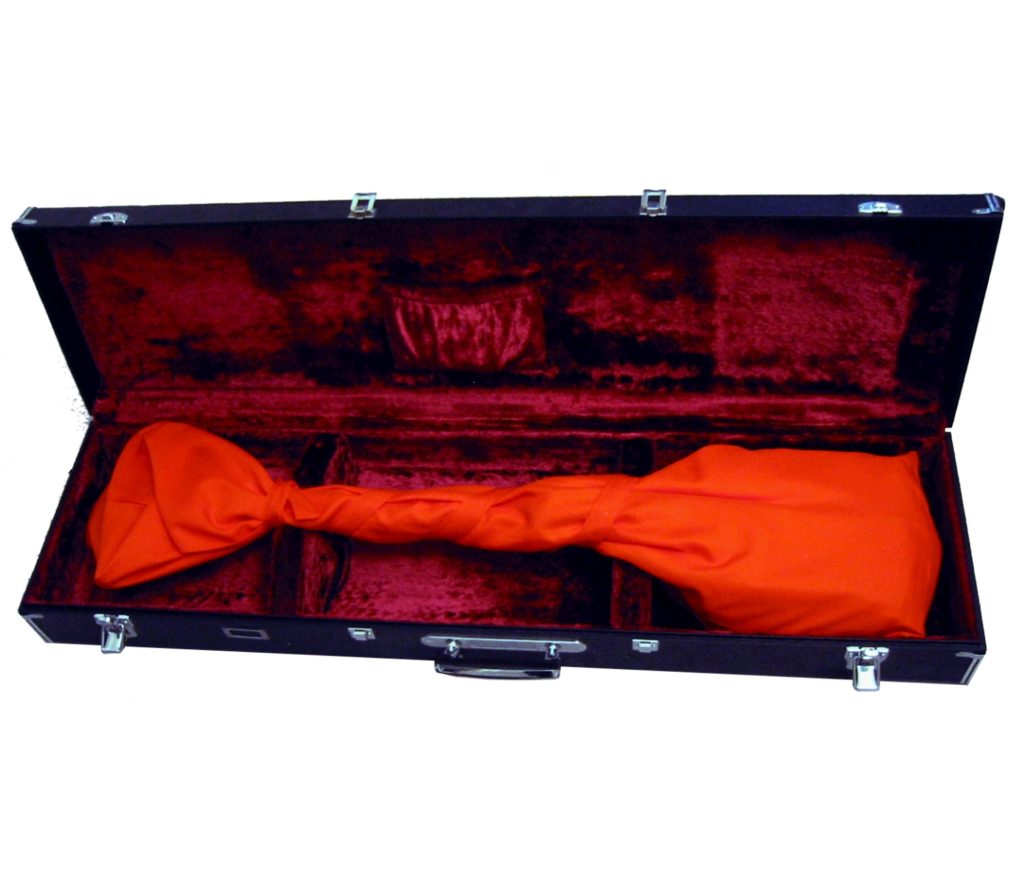The Shamisen is a three-stringed instrument that resembles an American banjo. It originated in China and came to Japan through Okinawa.
The exact date of its arrival in Japan is unknown, but reference to the shamisen’s presence in mainland Japan is made in early Buddhist scriptures. The instrument is typically made from Chinese Quince, Redwood, or Red Sandalwood. The body (dou) of the shamisen is faced with dog or cat skin. The strings (ito) are woven of three different thicknesses of silk thread. The shamisen is then plucked with a large pick, called a Batchi. The player strikes at the strings with the batchi which produces a unique sound.
The neck (sao) or fingerboard area is built up of three sections of wood whose design depends on the genre of music to be played. Nagauta style music for example uses a thinner profile neck. Regardless, the shamisen sao has no frets, and therefore learning where the notes are is a particular challenge.

Strings are plucked with “Bachi”. One typical material of bachi is a turtle shell. It has both strength and elasticity. Turtle shell tips are adhered to the handle made of plastic.

Another type of bachi is made of ivory. It is expensive. It usually turns yellow over the years.

Shamisen shall be stored in the hard case. There are soft type carrying case.
